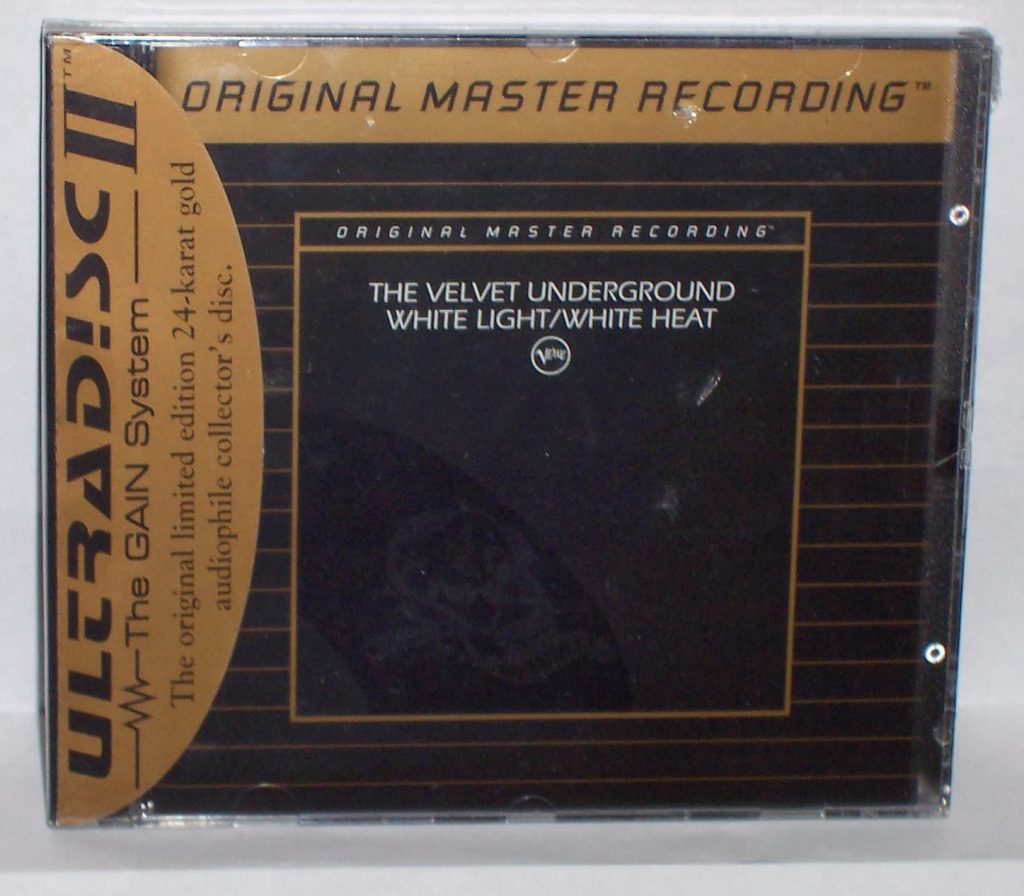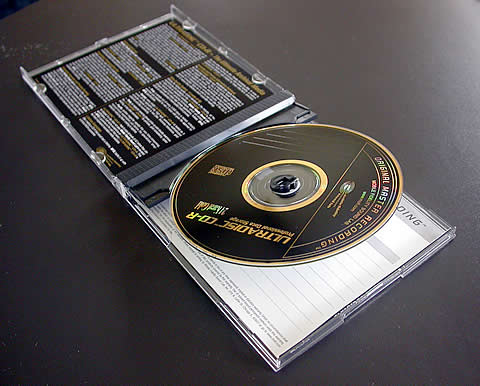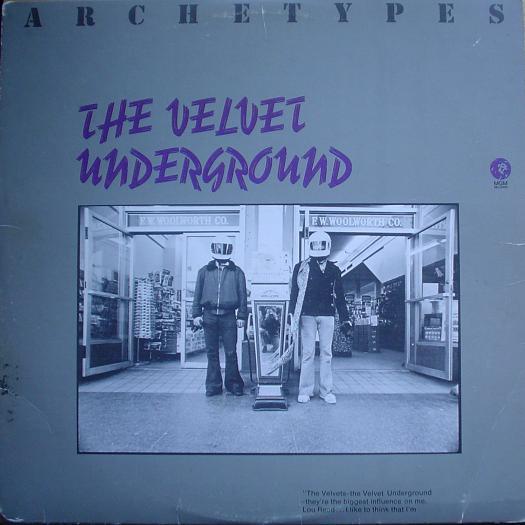
SOME VELVET UNDERGROUND STUFF – here’s a cool blog with Velvets related stuff Blog To Comm: Foggy Notion – Velvet Underground and relation to Varulven Records Here’s BLOG TO COMM’s comments on an issue of VARULVEN: (One final parenthetical note: my current mini-obsession with Boston-bred Velvets homage stems from an issue of Count Joseph Viglione’s VARULVEN fanzine, an early 1975 ish at that before the mag went totally into rock music! In this issue amidst the horror movie info and Alfred Hitchcock pix was an article on Lou Reed and the Velvet Underground, a nice albeit typically fanzine-esque piece which gives some of the Count’s views on the man called Lou and his music for all that was worth [and to me it was worth PLENTY]. What striked me most about this piece was not what was said, which had pretty much been said before, but the closing remarks about the Modern Lovers and their Velvetness as well as the Kids and their cover of “Foggy Notion”[!]…not to mention some group called “The Astrals” who the Count told us were carrying on the tradition!!!!! Having never heard of the Astrals and certainly wanting to, I emailed Mr. Viglione to no avail. Even a Velvets maniac like Imants Krumins drew a blank making me toss out the question to YOU, dear blog reader. So, does anyone out there have any concrete [or even cement…hee hee, the blogmeister must have his little joke!] information on these Astrals? Any help would be appreciated!)
This was my second article for REPLICATION NEWS, probably the September 1999 issue. The long-established publication became MEDIALINE in the new millennium. Miller/Freeman was the publisher, they sold out to United Entertainment Media. Replication News/Medialine folded in 2007.
Joe Viglione’s interview with Shawn Britton on the Mobile Fidelity versions of the first 2 Velvet Undergound albums on GOLD CDDiscussion of joe Vig’s Velvet Underground mastering by Shawn Britton
Mobile Fidelity Releases Two Velvet Underground Discs on Gold By Joe Viglione
On August 4, 1999, Shawn Britton spoke with us from his office at Mobile Fidelity Sound Labs in California. The release of these two classic discs, “The Velvet Undrground & Nico” and “White Light/White Heat” might surprise.
Long before Spinal Tap went over the top, Lou Reed, John Cale, Moe Tucker and Sterling Morrison rolled into the studio and cranked their amps to 11 (well, Moe on drums had to crank above the din). One can easily believe the urban myths concerning the shock producer Tom Wilson might’ve felt…- “White Light/White Heat” is the tour-de-force wall of noise that “…& Nico” only hinted at.
To hear seventeen minutes and thirty four seconds of “Sister Ray” after being re-processed by The Gain System of Mobile Fidelity on this Ultradisc II is truly a unique experience. I had to get the scoop from the guy who’s job it is to translate these precious masters to gold…
RN: You’ve been engineering at Mobile Fidelity for how many years?
SB: Tomorrow it will be 14 years. Started here on 8/5/85
RN: What was your first position at MFSL?
SB: Tape duplication, actually, we made pre-recorded cassettes onto Chrome BASF tape and special high tech cassette shells, etc.
RN: Were you involved with the Half Speed mastering?
SB: The half-speed mastering was cutting lacquers on a hald-speed Neumann lathe and not until a couple of years back, 97 I think or 96 we started producing a product called the Amidisc 200 – 200 gram LPs, we eventually purchased a pressing plant in Southern California, and brought it up here to Northern California, we’re about two hours north of San Francisco. Started pressing 200 gram records – this heavy duty vinyl, in fact, we are the only people to ever make 200 gram records like that.
It became too much of a burden to the company to produce records…this is a really small company. People have an idea that because we’re global, and we’ve been at this since 1977, people have this image that we’re this huge company. We’re not. We have visitors from Europe that come on vacation that want to swing by MoFi and they – invariably – they get a tour of the building and say “where’s the rest of the building.” It’s not a big operation, we have big ideas, but it’s a small operation.
Emotionally and from a sonic standpoint (the records) were something we wanted to pursue, but business-wise we just couldn’t maintain it. Over the years as records were phased out from retailers, there’s not even bins to hold them anymore. So what used to be our distribution network and our mom & pop stores have effectively vanished.
RN: The two Velvet Underground CDs, “The Velvet Underground & Nico” and “White Light/White Heat”, they came out around a year apart?
SB: I think so, Joe, you’ve gotta remember, that my memory is really selective. It selects what it wants to pull up.
RN: Do you engineer a lot of records in a week?
SB: Well, no, what sets Mobile Fidelity apart from your standard record company is that we really take our time. Some projects can take weeks. That’s one luxury I have. Standard mastering, I did some work down at MCA records a few years back, archival stuff, and it appeared to me that they were putting out two or three cds a day. Getting the projects mastered, and then they’d send it off to make parts, the digital masters.
Whereas it can take me anywhere from a week and a half up to over a month to do one album.
RN: Really!

SB: The boss calls the normal procedure mastering by the pound. And it’s true, you just have to chop ’em out. You gotta get it done, and they are under a deadline to get things to market. We’re not under any deadlines, we release them when we want. I’m given a lot of leeway. I’ll do an album, complete it, listen very carefully and if I’m not absolutely pleased I’ll tell the scheduling department “I need more time.” I want this to be the absolutely best version that I can get out there to market because these gold CDs last forever. People are going to listen to this work, hopefully, twenty years from now and say “Wow, Mofi did a good job.” RN: You have no fear that they will Oxidize as some people fear aluminum ones might? SB: Well you know, Joe, honestly, aluminum discs should not oxidize in our lifetime…but to digress, I had a guy from Florida call me onetime and he said “I’ve been storing some CDs in my fishtank, and I think they’re starting to kinda get CD rot on the edges. What do you think? I told him, well, first off, don’t store your CDs in your fish tank. RN: Is this a joke? In an empty fish tank?
SB: No, in the water! I think he wanted to see what would happen to his discs!
RN: Oh, man…

SB: I love people…the thing about gold… back in 87 or so we started researching different metals to sputter onto the polycarbonate sub… and we looked at platinum, nickel, some alloys, gold and we found that the gold…Hi Karen, our PR Director Karen Thomas is here…we found that gold had not only higher reflectivity than the others, but gold makes an incredible atomic bond to the substrength, it sputters very very well. It’s called the metalization process by the way.
Gold will never oxidize. And as a benefit of this, the way they lay it down onto the polycarbonite it makes for very smooth even coating, that’s why gold is used in electrical contact, not just oxidation resistance, it’s a very smooth coat. And in terms of a compact disc, there’s no pin holes where…in the early days of aluminum discs if you hold one up to a strong backlight, you can see pin holes in there…
RN: incredible!
SB: It kind of looks like stars on a night sky, and what that means is your air correction circuitry in your cd player will be enabled…well its got to guess at that missing data…and with gold you don’t get those pin holes. So that was something that we discovered at the time and thought “well, this is great” and as far as sonics, what that yields is a more stable image in your soundstage, and in exhaustive tests…. we’ve been vindicated after doing this for so many years…in the industry people said “oh this is a gimmick, their trying to make more money.” Well, independent of MoFi I think Polygram Europe did exhaustive tests on this and engineers can tell in A/B switching which is an aluminum disc and which is a gold disc just from the stabilization of the imaging.
Shawn Britton, part 2
RN: Now Columbia Records released gold discs, they had Spirit’s “The Twelve Dreams Of Dr. Sardonicus” in release. But they also give material to you, the Blood Sweat & Tears record, for example. Why do they do some gold discs in house, and give some to MoFi?
SB: Well, actually, we have gone back and re-mastered some things that they released on gold and I think their gold master sound series… I think its discontinued. It’s a prohibitively expensive process and the replication costs is high. Because its going to be in Replication News it says right on the discs, by Zomac Optical out there in Minnesota…we are allowed licensing on titles and the odd part – one would think there would be competition in the marketplace. I guess as far as Columbia feels and it works through their special projects division they probably feel “well, we’re going to make our money on this” so what the heck we’ll just make extra money by licensing this out. In reality, these gold discs, this is a niche market…that’s direct competition, so I can’t explain the justification why Columbia would release something on one hand, and then license it out on the other. I just assume that a company that huge, they don’t talk to one another.
In the early 80’s when we were producing compact discs, Mobile Fidelity had a distinct advantage in A to D converters and high end gear because we’re sort of a hybrid, if you will, a mastering house that uses high end audiofile type gear that you can go down to your local hi fi store and pick up. Theta Digital projects things of that nature, Nelson Pass amplification, and we have pro audio gear as well. And way back when most record companies, a)they didn’t take the time b)they didn’t have the gear like we do but now there’s mastering houses in these major record companies that have gear that rivals ours. We don’t have as much of a technolofical advantage beause digital technology has come along so much in the last ten yeas.
Think about it in terms of computers, things change very very rapidly. I think as far as PCM audio is concerned we’re approaching the maximum threshold as far as revolution with 96k sample rate and 24 bit work length. That’s just about the ceiling – and that’s partly why Mobile Fidelity is using the DSD technology from Sony is because the resolution on it is so incredible.
The DSD is bit stream technology It’s the technology that will be used in its full resolution on the super audio cd, SACD, which we will be coming out with in a couple of months. You’ll be seeing Mobile Fidelity releasing some Super Audio titles, it’s a high res format Joe.
The Super Audio CD – it has the capability to have a hybrid disc, that will play your normal compact disc layer or the red book spec layer, and it’s got a high resolution layer, which will allow you to play the high res super audio cd layer, which is what the DSD – so as far as product is concerned…right now what Mobile Fidelity does…and what we did…the first (DSD) title was Tom Petty’s “Full Moon Fever.”
part 3, tape 2
RN: Back to the master tapes you get, does Mobile Fidelity ever bake or restore tapes?
SB: We don’t own these tapes, we have our own restoration techniques, but we do not ever bake a record company tape, that’s up to them.
RN: When you cut half-speed mastering vinyl, did that include the “Gain” system used on these Velvet Underground discs?
SB: Well, yes, the Gain system, when it was introduced, was an upgrade to both mastering chains, the analog and the digital side. And on the analog side we had Nelson Pass, who is a high end designer – he worked at Threshold for many years sold that company, now he’s got Pass Laboratories. Nelson built us a complete cutting rack system with a control unit and these cutting amplifiers to drive the cutter head of our Neumann Lathe VMN 70 lathe which cuts at half speed. Now with half speed it was really developed to its maximum potential by JVC in the 70’s for cutting quad, if you remember quad. Well the JVC version of Quad had to have a 50k carrier cycle, this frequency which allowed you to adjust your matrix for proper trackimg. Well, 50K is an insane frequency to cut, it burns up most cutter heads so in order to do that they used a half speed technology wherein you run the tape at half speed and you run the lathe at half speed, and then you’re able to get incredible frequency.
And that’s why Mobile Fidelity, as it began with Brad Miller, he contacted Sam Ricker at the JVC cutting center in L.A. and they cut some – primarily sound effects records, trains and things of that nature, Brad used to do location recording for audiofile stuff. I’m sure you remember back in the early days of hi fi people would have these recordings of trains which would go from one side of your stereo to the other…it was a demo record.
Well then they took this technology and they thought “why don’t we cut some music” and they approached some record labels and licencsed the Mystic Moods Orchestra then they licensed John Klemmers Touch, a number of early software titles like that, and cut half speed and the results were just stunning.
Compared to what other record labels were doing back then, it just knocked the audio file world on its ear. The MoFi version of “Dark Side Of The Moon” is still very, very desirable on lp and on the UHQR Ultra High Quality Record, which was pressed by JVC on the Super Vinyl Compound.
RN: So they were a competitor of yours back then?
SB: Well actually, they pressed our records for us in Japan…that’s what the whole half speed thing was about. And then the other side of the mastering chain was the digital end, where we had Theta Digital…Theta built us this hot rod A to D converter, that used incredible oversampling and then its decimated down to sixteen bits for CD purposes at the 44.1K sample rate…and that was the first “Gain” system in that incarnation at that time. Since that time i think it was last year we came out with “Gain II” which was an upgrade to our Studer Tape Transport by Tim deParavacini, and we’ve got ultra wide frequency response now. I have never seen electronic gear have this kind of frequency response. It’s phenomenal. If there’s something on the master tape, we can capture it now.
RN: Wow. Do you employ the Super Bit Mapping Direct which was introduced by Sony?
SB: We talked about the Sony DSD system that I’m using… Sony started using Super Bit Mapping it’s a dithering scheme where you can take longer word length – let’s say 24 bit, and then decimate it down using noise shaping – to the 16 bit 44.1 sample rate for cd purposes, the cd specification.
What MoFi is doing is using DSD, Direct Stream Digital, which is incredibly high resolution, and then its decimated down using Super Bit Mapping Direct…and this is a very specific process only for DSD…and you should hear, Joe, if you ever get the chance to come out here to California, one we’ll go wine tasting, two, you can listen to this DSD, and it is so close to what the master tape sounds like, it’s phenomenal, it’s a real step forward for digital. And it’s what we call Future Proof because they can decimate it down very easily to different sample rates. Right now I archive everything in this high resolution medium to an A.I.P. tape and then decimate it down later for release on a compact disc.
So we have the capability now to do the Super Audio CD’s for the high resolution layer and for the standard CD redbook spec layer. It’s all here.
RN: And one more question about Ultradisc. You have the Gain System, and then you have Ultradisc. Is that a name for the disc, or is that a process as well?
SB: Well, Ultradisc was a name for the high end line of CDs we were coming out with, and that started back in ’87, like I said it’s hard to remember that far back exactly when we released these gold discs. It’s not necessarily tied to the gold sputter…it was more a separate product line than the standard aluminum cd. So Ultradisc as far as the years have gone by, were referred to the Gold CDs, and then Ultradisc II was a new formulation of the Gold CDs, improved sub straight or pit formation if you will, more gold being deposited on for more reflectivity. In fact now with Zomax Optical we have some of the lowest error rates in the industry. They are a tremendous, tremendous replicator. I’ve been nothing but pleased with their quality. They’re phenomenal. If we have any questions or any points to bring up with them they immediately jump on it. This is high ticket stuff, it’s really the best that CD replication has to offer.
RN: OK, now one final question on Mobile Fidelity and then we’ll get to The Velvet Underground. The Ultradisc then is a combination of the Gain System and the gold cds…
SB: Well, the Gain system is the mastering chain…actually its Gain II now. so Gain II is not just used for gold cds. Gain II because its our mastering chain – is also going to be used for the Super Audio CDs and we have some DVD’s coming out, so Gain II is really the mastering chain. The Ultradisc is a software. Now, our DVD’s when they come out, are not going to be called Ultradiscs or Ultradisc II they’re going to have their own name.
RN: Ok now we have to digress again. You brought up Quad Records, I heard that a lot of the Quad Records will turn into DVD’s first because they’re already separated.
SB: Well some have, actually, some …I don’t know if they’re DVD’s, but Brad Miller had gone back with his 5.1 records and they released on DTS…you have to have a processor to play it back and you have discreet channels for Surroundsound…and it is phenomenal…
RN: So the Quad Joplin “Pearl” album and Santana’s Quad “Abraxas” . and even the Carpenters had one. The one pretty much available is The Doors Greatest Hits…Elektra seemed to press a lot of them – perhaps these will be the first…
SB: It’s hard to find systems anymore, the actual hardware to play them back.
There was no specification for DVD A If you release titles under the DVD video specifcation, if players come out later and they won’t play these discs, its going to be confusing for the consumer, it confuses the market place so we’ve been sort of waiting to see how things shake out and we’ll begin releasing our DVD’s here in a couple of months.
OK, that’s my interview with Shawn Britton on remastering the Velvet Underground. Want to go further down the rabbit hole? Of course you do… talk to Janis…

-Review by Joe Viglione, AllMusic https://bestkid.tumblr.com/post/74428671416/mgm-re-released-the-first-three-velvet-underground
White Light/White Heat – AllMJusic Review by Joe Viglione
The Velvet Underground – the Singles http://storiesmbm.blogspot.com/2010/01/velvet-underground-singles.html
Wikipedia page on MFSL – https://en.wikipedia.org/wiki/Mobile_Fidelity_Sound_Lab
